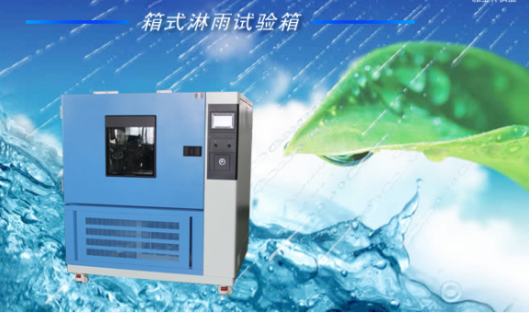The credibility of a rain test depends not only on the precision of the equipment but also on the completeness and transparency of its test report. A structured report communicates the reliability of the process, the compliance with international standards, and the replicability of the test outcome. In environmental testing for automotive, aerospace, electronics, and materials engineering, rain test chambers are widely used to simulate water ingress conditions, surface degradation, and sealing performance under artificial rainfall. To ensure that the results are accepted by regulators, clients, and internal quality departments, the report must include a comprehensive set of data points.
Identification of Test Specimen
The report must start with detailed specimen information. This section usually contains the name of the product, its model number, serial code, batch identification, dimensions, material composition, and the structural features that may influence water ingress. Any surface treatment, such as coating, painting, or sealing application, should be described, as these directly affect the outcome of water exposure tests. Without this baseline, test data cannot be correlated to real production quality.
Test Objective and Standard Reference
A rain test is never conducted in isolation; it follows specific international or regional standards such as IEC 60529 (IP code classification), ISO 20653 for road vehicles, or MIL-STD-810 for defense applications. The report must explicitly reference the standard applied, along with the test category and clause. Where company-specific or customized procedures are used, a precise description must be included, ensuring that third parties can understand the rationale and scope. The objective—whether to verify ingress protection, evaluate corrosion resistance, or assess functional reliability—must be clearly stated.

Environmental and Chamber Conditions
The performance of a rain test chamber is influenced by its internal environment and calibration status. Therefore, the report must document chamber conditions such as ambient temperature, humidity, and atmospheric pressure during the test. It should also state whether the chamber was calibrated according to recognized metrology guidelines. This guarantees that the water spray, droplet distribution, and nozzle configuration meet reproducibility requirements.
Water Spray Parameters
The heart of the rain test lies in the simulation of natural rainfall. Parameters describing the water spray must be included in precise detail:
-
Water pressure: The pressure applied at the nozzle, often ranging from 80 to 150 kPa depending on the standard.
-
Flow rate: The volume of water discharged per unit of time, commonly expressed in liters per minute.
-
Spray angle and nozzle configuration: Information on the number of nozzles, their orientation, and the angular range of water projection.
-
Droplet size and distribution: Data from calibration or measurement confirming that droplets fall within standard requirements.
-
Spray duration and exposure cycle: Exact time of exposure, intervals, and total number of cycles applied to the specimen.
These data ensure that the water exposure reflects the intended severity and allows laboratories worldwide to replicate results.
Specimen Mounting and Orientation
The way the specimen is mounted in the rain test chamber significantly affects water ingress. Reports must specify the mounting fixtures, the distance between the specimen and the nozzles, and the angle at which the product was oriented. For vehicles and larger equipment, rotation schedules or movement during spraying should be described. If protective covers or operational positioning were applied to simulate real-life installation, these conditions must be fully documented.

Functional Status During Testing
Certain industries, such as automotive electronics or aerospace avionics, require the product to remain operational while exposed to artificial rainfall. In such cases, the report must include whether the device was energized, what functions were monitored, and which sensors or measurement tools recorded operational integrity. For passive materials or unpowered products, it is still important to indicate whether visual observation, mechanical loading, or vibration was applied concurrently with the rain exposure.
Water Characteristics
The chemical and physical properties of the water used in testing must be specified. Conductivity, hardness, pH level, and temperature of the water influence corrosion, deposition, and leakage outcomes. For example, deionized water, tap water, or salt-containing solutions may be used depending on the purpose of the test. If filtration or recirculation systems were applied in the chamber, the report should state the filtration grade and circulation method.
Duration and Sequence of Exposure
A complete rain test report must record the timeline of testing. This includes the total exposure duration, any segmentation into intervals, rest periods, or repeated cycles. In accelerated tests, where time compression is employed, the report should explain the multiplication factor used to equate the laboratory exposure with real-world rainfall duration.
Inspection and Measurement Results
After rainfall exposure, multiple forms of inspection are performed. The report must systematically record:
-
Visual inspection: Presence of surface defects such as discoloration, blistering, cracking, or delamination.
-
Ingress detection: Whether water penetrated into the enclosure, and if so, the exact location, volume, and time of detection.
-
Functional tests: Verification of electrical continuity, insulation resistance, mechanical mobility, or signal transmission.
-
Weight measurements: In certain standards, the increase in specimen weight due to water absorption must be quantified.
-
Corrosion evaluation: If applicable, assessment of rust spots, chemical reaction marks, or coating degradation after drying.
All these results must be presented with photographs, numerical tables, or schematic diagrams for objective interpretation.

Compliance Statement
The report should provide a direct conclusion on whether the specimen meets the required standard. This compliance statement must be unambiguous: the product either conforms or fails to conform. Where partial compliance occurs—such as meeting IPX3 but not IPX4—this must be precisely noted. Such clarity allows clients and regulatory bodies to use the report as an authoritative decision-making document.
Calibration and Equipment Traceability
Trust in a rain test chamber report depends on evidence that the testing equipment was correctly calibrated and maintained. The report must include the chamber’s identification, manufacturer, calibration date, and traceability to national or international measurement standards. Any auxiliary devices, such as flow meters, thermometers, or data acquisition systems, should also be listed with their calibration status.
Safety and Operational Notes
For certain tests, safety incidents such as nozzle clogging, chamber leakage, or unexpected pressure fluctuation may occur. The report should contain notes on operational anomalies, mitigation measures, and safety procedures followed during testing. This information is vital not only for internal quality systems but also for continuous improvement of testing methodology.
Data Presentation Format
To ensure readability, the report should follow a structured data presentation format. Tables, graphs, and photographs are indispensable. Graphical representations of flow rates over time, pressure stability, or droplet distribution give credibility beyond textual description. Digital reports should include traceable timestamps and, where possible, raw sensor data attachments.
Value of Comprehensive Reporting
The inclusion of these data points transforms a rain test from a simple laboratory exercise into a defensible proof of product quality. Manufacturers gain competitive advantage when their reports are complete, technically transparent, and internationally accepted. Regulatory authorities view such documentation as a sign of corporate responsibility, while clients interpret it as evidence of robust product design.
In industries where water ingress can lead to catastrophic failure—whether short-circuiting electronic modules, compromising automotive safety, or damaging aerospace systems—the report becomes as valuable as the test itself. The more precisely it communicates chamber conditions, exposure parameters, and inspection outcomes, the stronger its role in product certification and global market access.












